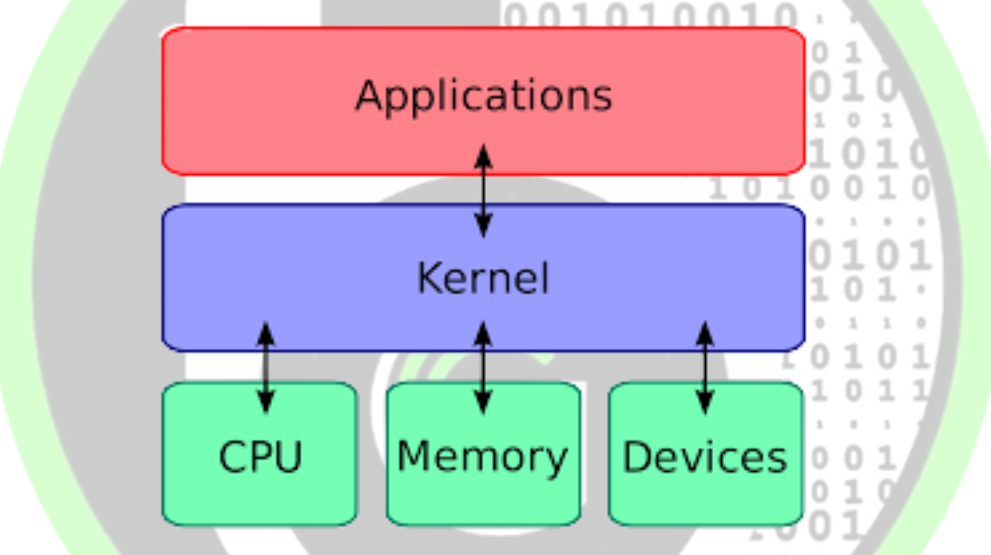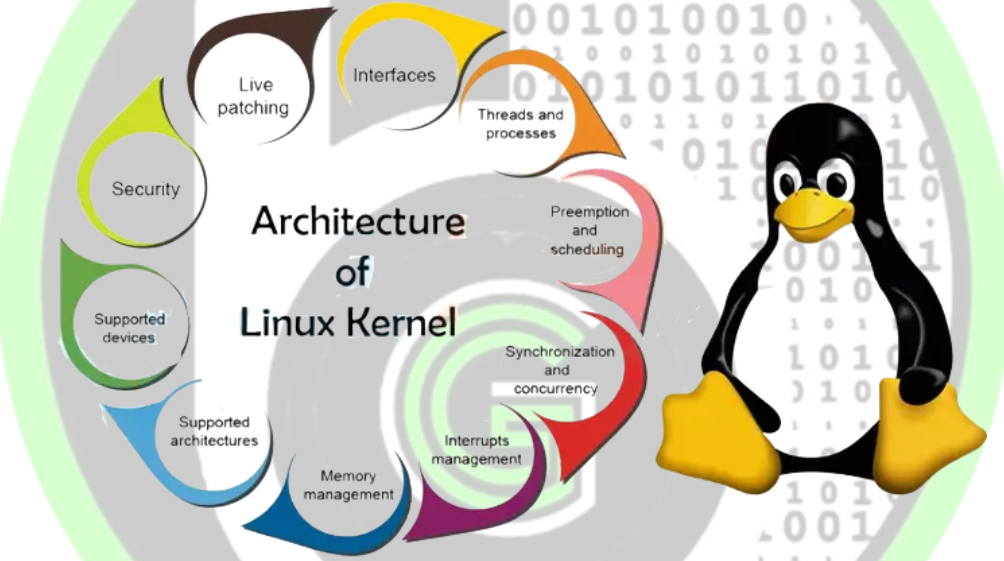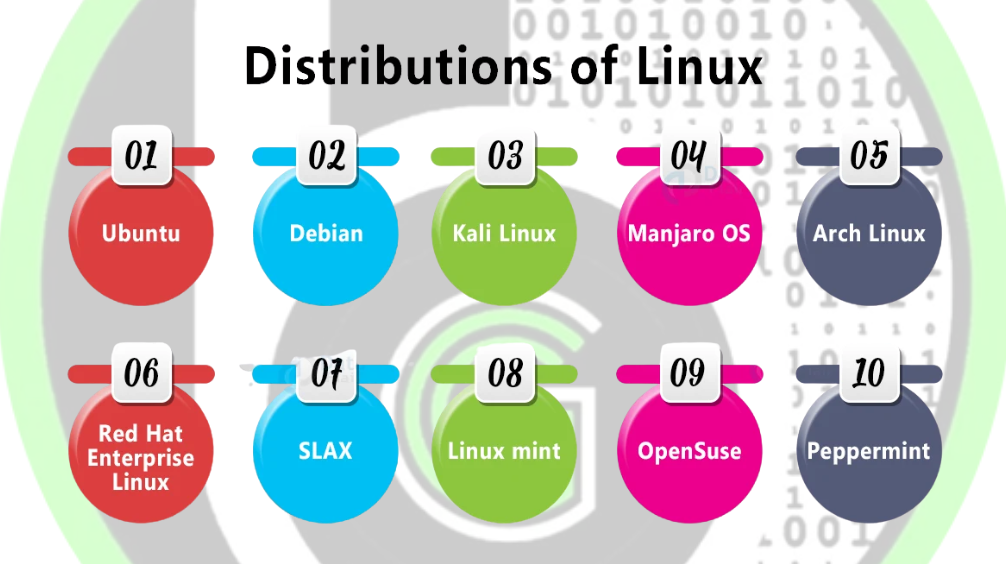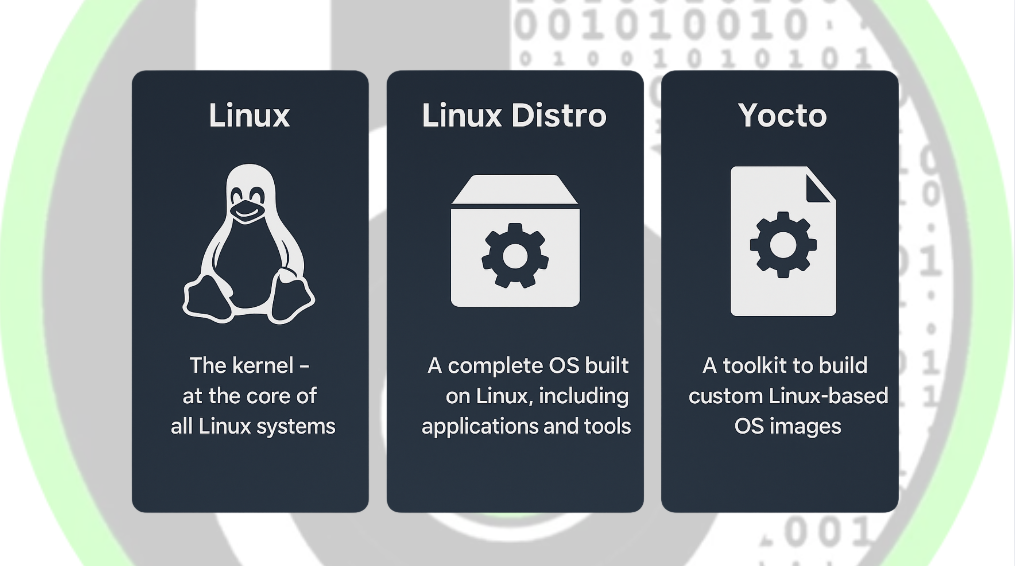There are no items in your cart
Add More
Add More
| Item Details | Price | ||
|---|---|---|---|

Whether you're working on embedded systems or desktop environments, terms like Linux, Yocto, Linux distro, and Yocto image often come up. But what do they all mean? Are they the same? And most importantly, why should you care?
In this blog, we’ll break down these terms and explore how they fit into the Linux ecosystem, especially from an embedded development perspective.
What is Linux? 
Linux is not an operating system in itself—it’s a kernel. The Linux kernel is the core part of a Linux-based OS that manages hardware, memory, processes, and system calls.
Think of it like the engine of a car. It does all the heavy lifting, but you still need a steering wheel, seats, and dashboard (user space tools) to drive the car.When combined with user space software (shells, utilities, GUI, etc.), it becomes a Linux-based operating system.

The Linux kernel is the core component of the Linux operating system. It's a low-level program that sits between the hardware and the user-space applications. Think of it as the bridge that enables communication between:
Responsibilities of the Kernel

| Kernel Type | Description | Example |
|---|---|---|
| Monolithic | All services (memory, file system, drivers) run in kernel space | Linux Kernel |
| Microkernel | Only essential services in the kernel; rest in user space | MINIX, QNX |
| Hybrid | Mix of both, for performance + modularity | Windows NT, XNU (macOS) |
NOTE :- Linux is a monolithic kernel, but it's modular, meaning you can load/unload kernel modules (drivers) dynamically.

| Term | What It Means |
|---|---|
| Kernel | The core program that manages hardware & system resources |
| Operating System (OS) | Kernel + system tools (shell, drivers, UI, apps, etc.) |
Example: In Ubuntu, the kernel is just one part; the OS also includes GNOME desktop, terminal, compilers, etc.
What is a Linux Distribution (Distro)?
A Linux distribution (or distro) is a complete operating system built around the Linux kernel, with pre-packaged tools, applications, and system libraries. Popular examples include:

These are great for general-purpose computers but can be too heavy or unsuitable for embedded systems.
What is Yocto Project?
The Yocto Project is an open-source build system that helps you create custom Linux distributions for embedded systems. Yocto is not a Linux distro itself. Instead, it's a toolset that allows you to:
Why Use Yocto?
A Yocto image is the final output (file system image) you get after building your custom configuration with the Yocto Project. It typically includes:
.wic or .sdcard → Flashable SD card image .ext4 or .squashfs → Root filesystems .tar.gz → Archive of the root filesystem | Term | Description | Use Case |
|---|---|---|
| Linux | The kernel (core of the OS) | Hardware abstraction |
| Linux Distro | Complete OS built around Linux kernel | General use (PCs, servers) |
| Yocto Project | A tool to build custom Linux distros | Embedded system development |
| Yocto Image | Final product (bootable image) from Yocto | Flash onto embedded devices |

| Feature | Linux Distro (e.g., Ubuntu) | Yocto Project |
|---|---|---|
| Size | Large | Customizable, minimal if needed |
| Customization | Limited | Fully customizable |
| Target Hardware | Desktops, laptops, servers | Embedded devices, SBCs |
| Learning Curve | Easy | Steep |
| Package Management | APT, RPM, etc. | BitBake, custom layers |
| Build Time | Pre-built | Must be built from source |
In Yocto, a layer is a modular unit containing:
Let’s say you’re building a smart home controller:
If you're working in embedded systems, understanding the relationship between Linux, Linux distros, and Yocto is crucial.
"Lorem Ipsum has been the industry's standard dummy text ever since the 1500s." — James Chapman
Lorem Ipsum is simply dummy text of the printing and typesetting industry. Lorem Ipsum has been the industry's standard dummy text ever since the 1500s, when an unknown printer took a galley of type and scrambled it to make a type specimen book. Lorem ipsum dolor amet, consectetur adipiscing elit.
Lorem Ipsum is simply dummy text of the printing and typesetting industry. Lorem Ipsum has been the industry's standard dummy text ever since the 1500s, when an unknown printer took a galley of type and scrambled it to make a type specimen book.
Mridul Bajaj